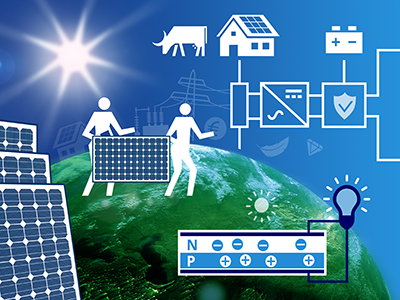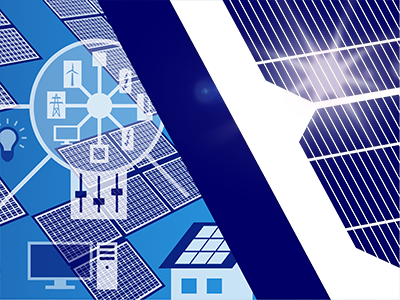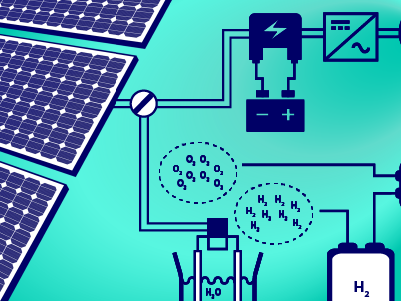Free webinar
Join us for an insightful webinar exploring the impact of solar energy technologies. Also referred to as photovoltaics (PV), this electricity generation method is one of the leading renewable energy technologies helping our society transform our energy systems and meet climate change mitigation goals. Join our webinar, presented by Prof. Arno Smets, to stay up to date on the latest developments in solar energy!
The solar energy revolution is just beginning!
The rapid progress in solar photovoltaics is astonishing. All major future energy transition scenarios predict a key role for solar energy in combating climate change. After all, the sun rises for free! The global cumulative installed nominal photovoltaic capacity has exceeded the magic limit of 1 terawatt in 2022 and doubled in 2024 to 2 terawatts. This is equivalent to 7% of global electricity generation. Companies, institutes and universities continue to improve the performance and reliability of solar cells and modules to levels we could only dream of a decade ago. More regional supply and production chains are being established around the world. Currently, the wide variety of companies involved in the solar photovoltaic sector support 4.5 million jobs worldwide, and this workforce is growing by more than 250,000 per year. The solar energy revolution is just beginning!
In this webinar, Prof. Dr. Arno Smets will playfully guide you through the world of solar energy. How does it work? What are the advances in the technology? What makes this fastest-growing energy technology so successful? And what about the challenges? How do we make supply chains circular? How do we solve the bottlenecks in grid integration? What is the role of cost-effective storage concepts and the introduction of electric mobility? And how do we offer high-quality education and training programs in the field of solar photovoltaics?
Key Takeaways
- The role of solar energy in the energy transition and climate mitigation – The IPCC presents photovoltaic electricity as the ‘low-hanging fruit’ to establish significant reductions in CO2 emissions in the short term (by 2030) and in the long term (by 2050).
- Latest advances in PV technology and the role of circularity – What are the advances in mature PV module technologies, which new PV technologies are emerging and why is circular-by-design an important metric?
- Integration of photovoltaic systems in the energy system – The integration of solar electricity into future sustainable energy systems: the interplay between photovoltaic electricity generation, storage, distribution over the grid, Power-to-X, and sector coupling.
- Economic viability – Solar electricity is the cheapest form of new electricity generation.
- Human capital – How can we scale the training and education needs of the professionals in the continuously growing global job market in this sector.


